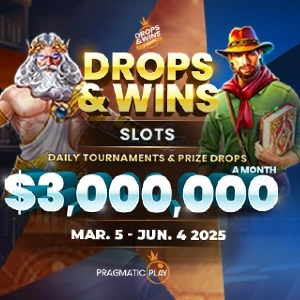From its early days in European courts to its rise as one of the most popular games in the world, the history of blackjack is as fascinating and layered as the game itself.
While its exact origins remain a hot topic of debate, it’s widely accepted that blackjack likely evolved from French card games in the 1700s, particularly "vingt-et-un," meaning "21." Over the centuries, the game has evolved across continents and cultures, adapting to local customs and even receiving its now iconic name in the United States.
History of blackjack: Origins and Early History (16th-18th century)


While many credit the French game vingt-et-un for Blackjack’s origin, the true beginnings of the game may stretch back even further. A theory suggests that the Romans may have been the earliest players of a game resembling blackjack. Roman soldiers were known for their love of gambling, and it's believed they used wooden blocks with different numbers on them as a form of play. However, this remains speculative, with no solid evidence to confirm the theory.
The first clear written reference to a game resembling blackjack comes from Spain in the early 17th century. In 1613, famous Spanish author Miguel de Cervantes, known for his masterpiece Don Quixote, wrote about a card game called "Ventiuna" (21) in one of his short stories. In the tale Rinconete y Cortadillo, two gamblers cheat in a game where the goal is to reach 21 points without going over. This reference suggests that a precursor to modern blackjack was already popular in Spain during the early 1600s.
By the 18th century, this game had found its way to France, where it became known as vingt-et-un. Played among the French aristocracy and royalty, including during the reign of King Louis XV, vingt-et-un became a popular pastime in French casinos. While it’s difficult to pinpoint the exact date of its emergence, historians estimate it gained popularity around 1760.
Blackjack Reaches America (19th Century)
French colonists brought the game of vingt-et-un to the United States in the early 19th century. However, it wasn’t until it arrived in New Orleans, a hub for gambling in the U.S. during the 1800s, that it took off in America. The original French rules were modified slightly to adapt to American gambling culture, but the essence of the game remained intact.
One of the more colourful figures associated with Blackjack’s early American history is Eleanor Dumont, a Frenchwoman who made a name for herself as a highly skilled dealer. In the mid-1800s, she opened a gambling hall called "vingt-et-un" in Nevada City, California. People from all over the country traveled to play against Dumont, who was considered something of an anomaly for being a female dealer. Her establishment added a touch of glamour and notoriety to the game as it grew in popularity.
Despite its rising fame, the game still went by the French name of vingt-et-un or Twenty-One throughout much of the 19th century, both in America and Britain. In Britain, the game evolved into a version called "Pontoon," a name that derived from a corruption of the French word "vingt-un." However, it was in the United States where the game underwent its most significant transformation.
The Birth of "Blackjack" (Early 20th Century)
At the turn of the 20th century, the game underwent a name change that would solidify its place in gambling history. As gambling halls and casinos sought to popularize the game, they introduced bonus payouts to entice players. One such payout offered players a higher bonus if they were dealt a hand that included the ace of spades and a black jack (either the jack of spades or clubs). This promotional effort was so successful that the name "blackjack" stuck, even after the special bonus was discontinued.
By the time Nevada legalized gambling in 1931, blackjack had already gained a strong foothold in American casinos. The game’s rules were codified by the Nevada Gaming Commission, ensuring consistency and fairness across all licensed establishments. The payout for a natural blackjack (an ace and a 10-point card) became standardized at 3:2, a rule that remains in place today.
Blackjack in the Modern Era (Mid 20th Century to Present)
The mid-20th century was a golden era for blackjack. As casinos flourished in places like Las Vegas, the game became a staple of American gambling culture. By the 1950s and 1960s, mathematicians and professional gamblers had begun studying blackjack in earnest, realizing that, unlike other casino games, it offered the possibility of skill-based play.
One of the most notable figures in Blackjack’s modern history is Edward O. Thorp, a mathematics professor who published Beat the Dealer in 1962. Thorp’s groundbreaking book introduced card-counting strategies that allowed players to reduce the house edge and improve their odds of winning. Although casinos quickly adapted by changing rules and shuffling cards more frequently, Thorp’s work cemented Blackjack’s status as a game of skill, in addition to luck.
Today, blackjack remains one of the most popular and widely played casino games worldwide. It has evolved into multiple variations, including Spanish 21, Pontoon, and Double Exposure. But the core gameplay has remained relatively consistent over the centuries.
From its origins in 17th-century Spain and France to its rise as a global casino phenomenon, blackjack has a rich and varied history. Its ability to adapt to different cultures and periods has helped it remain a favourite among gamblers for over 300 years. Whether played in a glamorous Las Vegas casino or on a digital platform, Blackjack’s enduring appeal lies in its perfect blend of strategy, skill, and chance. The game’s evolution continues, but its roots in the pursuit of 21 remain a timeless testament to its staying power.



